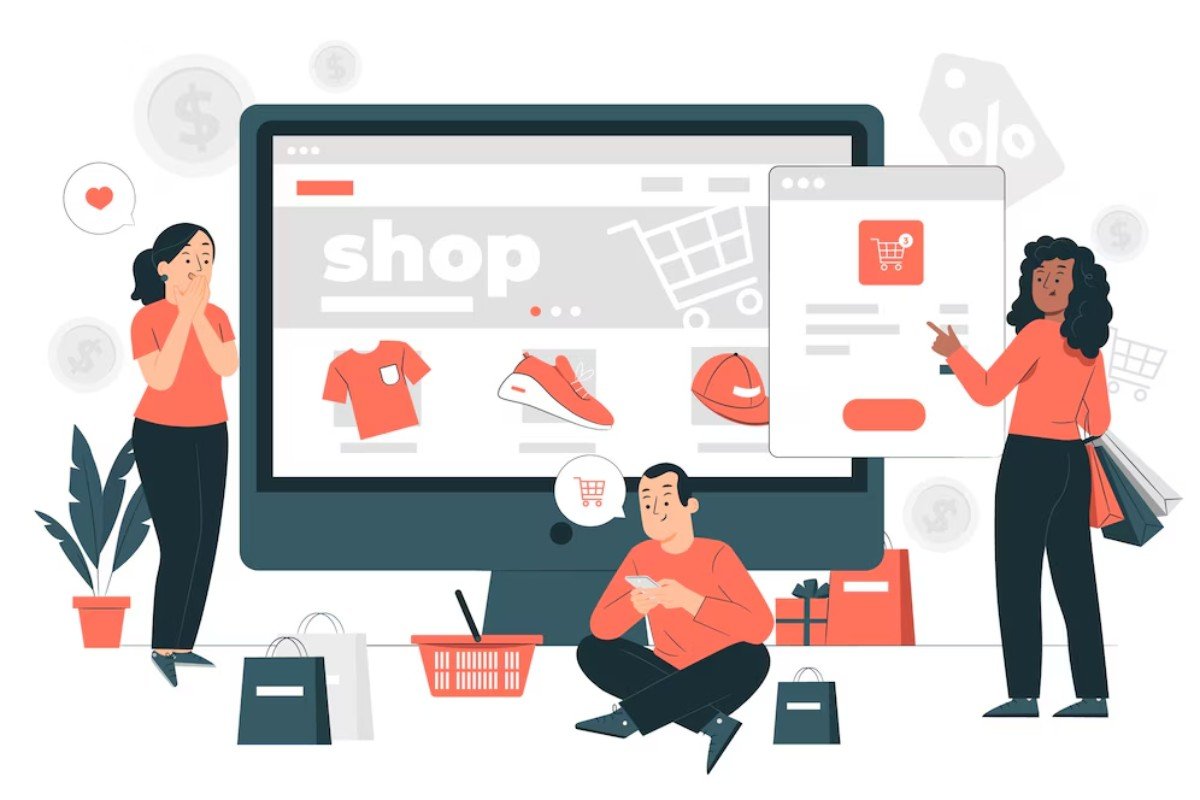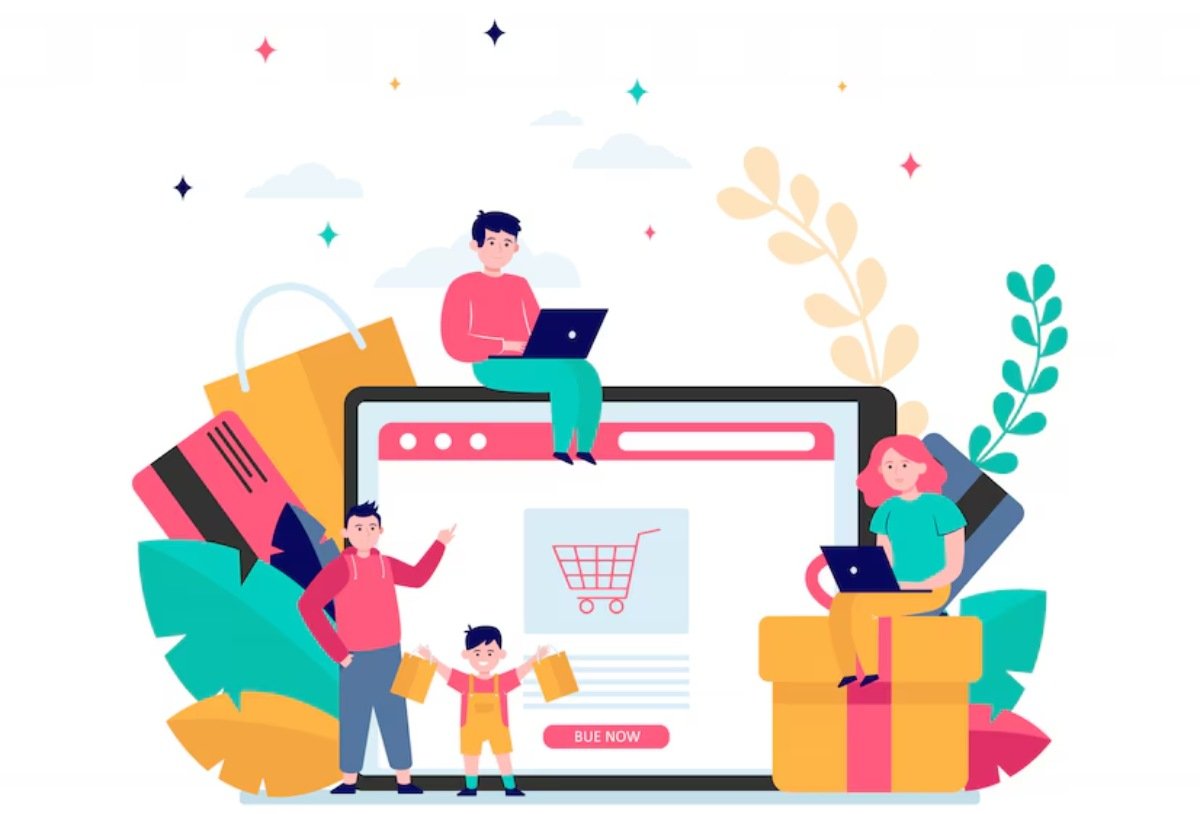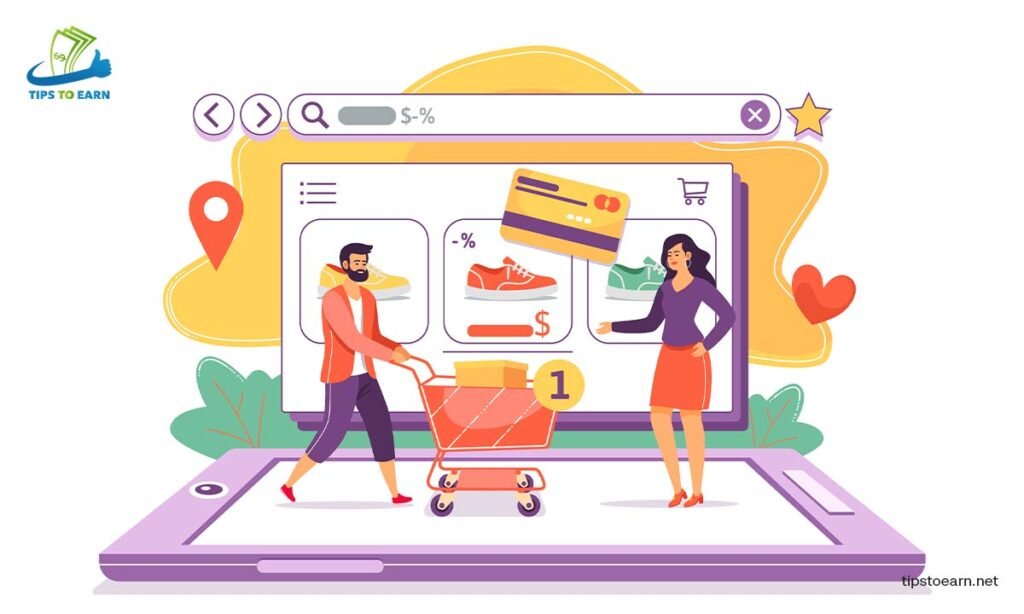Online stores aim to boost traffic and conversions, but deciding on effective marketing tactics can be challenging. This article provides an overview of 21 proven, effective tactics and ecommerce tools, with ideas for implementing each approach. It suggests daily implementation and stocking to determine the most effective strategies to successfully set up an ecommerce business.
21 Proven E-com Strategies To Set Up An Ecommerce Business

Here is a comprehensive guide to implementing 21 exclusive ecommerce marketing strategies to successfully set up an Ecommerce business and drive growth in today’s competitive online market.
What is E-Commerce Marketing?

Ecommerce marketing is the practice of using marketing tactics to attract customers to set up an ecommerce store for business, convert those customers to paying customers, and keep them after they’ve made a purchase.
A comprehensive ecommerce marketing strategy includes online and offline marketing techniques to increase brand awareness, customer retention, and sales.
Here are the 21 proven methods to upscale your online business.
1. Invest In SEO Strategies
Ecommerce SEO, also known as search engine optimization (SEO), is the practice of improving an online store’s product pages so that they appear on the top 10 search results pages on search engines such as Google, Bing, and Yahoo.
Ecommerce SEO results in higher organic traffic and higher click-through rates.
Keyword research, site structure optimization, and backlinks from trusted websites are all part of Ecommerce SEO.
2. Implement An Influencer Marketing Campaign
Influencer marketing, also known as influencer marketing, is a marketing method used by ecommerce businesses to attract new customers, increase brand awareness, and work with content creators.
Brands pay influencers (also known as internet celebrities) to promote their products. These influencers are paid in the form of free products, money, or discounts.
Influencer marketing is most commonly used on social media platforms such as Instagram, YouTube, and TikTok, as well as other platforms such as Facebook, Snapchat, and Twitter.
Influencer marketing reduces sales cycles and enables direct purchases on platforms such as Instagram and TikTok.
3. Put Your Items On Sale On Marketplace
Marketplaces, such as Amazon and eBay, are crucial for ecommerce brands to reach millions of customers worldwide.
These platforms can help brands discover their products, but come with high selling fees.
To complement their branded store, ecommerce brands should list their bestsellers, create compelling listings, and include branded packaging inserts.
4. Create A TikTok Marketing Plan
TikTok is a powerful social media marketing platform with over one billion monthly active users and 173 million first-time installs in Q2 2021.
Businesses thrive on genuine content, which gets more exposure and engagement.
TikTok’s algorithm prioritizes creators, its UI keeps users longer, and its discovery engine helps videos go viral.
Over half of TikTokers make purchases from brands they see in the app.
The platform offers livestream shopping and advertising for product promotion.
5. Execute Pay Per Click (PPC) Campaigns
Pay-per-click (PPC) advertising is a cost-effective and data-backed model for businesses, targeting search engines, social media, and websites.
Popular platforms include Facebook and Google, where ecommerce brands can target ready-to-buy shoppers.
PPC ads offer targeted campaigns, retargeting, and targeted audience engagement, resulting in higher sales.
6. Increase Sales Of Your Products
Upselling and cross-selling are effective strategies for ecommerce businesses to increase sales.
Upselling involves selling a slightly more premium product than the original one, often highlighting the difference in quality or handmade components.
Upselling should be related to the original product and sensitive to customer expectations.
7. Integrate Instagram Into Your Marketing Strategy
Instagram, with over 500 million daily active users, connects consumers, influencers, and brands.
Mastering organic Instagram presence involves engaging with followers through compelling photos, and hashtags, and posting strategically.
Ecommerce marketing can also benefit from Instagram’s features like shoppable posts and Stories.
8. Decrease The Rates Of Abandoned Carts
Websites lose money when visitors abandon their carts, with 69.82% of shopping carts abandoned.
To reduce this, businesses should address hesitations and offer incentives like discounts or free shipping.
An effective email recovery campaign can convince visitors to return to their carts, as seen at LUSH.
Create emails that remind visitors of their initial purchase and why.
9. Implement Text Message Campaigns
SMS marketing is the process of sending promotional messages to customers, primarily used in ecommerce.
It’s effective for offering special deals, updates, and product information, with a 15% higher click-through rate and a 20% increase in campaign opt-ins, according to Marketo research.
10. Increase The Number Of Email Subscribers
Email marketing is a highly effective channel for sales and customer retention, with 87% of marketers using it to distribute content.
It offers a more intimate interaction and allows for more personal messages.
To start, promote newsletters, blogs, and email capture efforts to reach subscribers, as seen with Huckberry’s focus on email list signing.
11. Enhance Your Email Marketing Strategies
To effectively use email marketing in ecommerce, it’s crucial to send regular, valuable emails to subscribers.
Use email marketing automation apps like ActiveCampaign to send welcome emails, exclusive promo codes, newsletters, and content.
Thank high-value customers and solicit feedback for improvement.
12. Provide A Smooth Customer Journey
Poorly designed stores can lead to customer loss due to untrustworthiness, lack of clear value proposition, hard-to-read font, and confusing navigation.
Despite improving dimensions, design mistakes like product segmentation, too many products on a page, and balance between text and visuals should be addressed.
Shopify themes like DODOcase can help improve ecommerce websites.
13. Integrate Live Chat For Online Store Visitors
Engaging with site visitors and customers beyond email can be achieved through live chat, which allows for targeted conversations on specific pages, after a certain period of time, or even after an email newsletter.
Live chat also allows for direct customer interaction, allowing for immediate resolution of concerns during the planning stage.
14. Forecast Future Sales
Expanding your product line requires evaluating market demand through keyword research, geographic validation, and social media trends.
Pre-selling items can test market demand.
To decide which product to sell, create pages with quality product photography and compelling copy, list them as “out of stock,” and see which gets the most attention.
Balenciaga offers shoppers the option to receive email notifications when a product is available again.
15. Develop A Content Marketing Program
Ecommerce stores should regularly blog to connect with customers and improve search engine rankings.
If you are already creating content, feature it on the online store.
Other content marketing strategies include podcasts, guest posts on other websites, and creating long-form content and guides to help customers use products effectively.
16. Adopt Personalization
Personalization is a powerful marketing strategy that can boost online sales by serving visitors personalized experiences based on their past actions and preferences.
BCG estimates it can increase sales by 10%, but only 15% of companies utilize this technology effectively.
It can also be customized based on location, catering to different customer needs.
17. Utilize User-Generated Content
User-generated content (UGC) is a powerful tool for generating social proof, as it encourages customers to make purchases based on similar experiences.
With 89% of consumers reading reviews before buying, UGC can take various forms, including product reviews.
One effective form is pictures of customers using products, as seen in Pepper’s bra store.
18. Have Local Strategies
Local marketing can be applied to both brick-and-mortar businesses and online retailers.
To increase online sales, businesses should identify customer concentrations, product preferences, and local events.
Additionally, if they have multiple warehouses, offering free, discounted, or expedited shipping to nearby customers can be beneficial.
This approach allows operations teams to execute promotions more efficiently and promotes sales cost-effectively.
19. Enhance The Functionality And Usability Of Your Product Pages
Conversion rate optimization (CRO) is a strategy to enhance website conversions and sales by identifying and addressing issues.
It involves conducting both qualitative and quantitative research to gain a comprehensive understanding of the site’s conversion-oriented nature.
After identifying challenges and opportunities, hypotheses and tests are developed to determine the most effective strategies.
20. Stress On Mobile Optimization
Optimizing your store for mobile involves designing your site with mobile visitors in mind from start to finish.
This includes having a bigger Add to Cart button on all mobile product pages and presenting images in different formats to make it faster for mobile visitors to load product photos and zoom in.
21. Reward Your Loyal Customers
Customer retention is a cost-effective strategy for retailers to increase online sales.
Return customers make up 22% of a retailer’s revenue and spend 15% more annually.
Rewarding loyal customers through a loyalty program can increase their spending and loyalty.
Programs can be point-based, offering discounts, free shipping, or gifts.
Outdoor brand REI has a robust loyalty program, offering exclusive sales, events, coupon codes, and a portion of their annual spending in-store dividends.
By focusing on customer retention, retailers can maintain a strong brand image and increase online sales.
You May Like Also: 21 Ways To Make Money Online
Bottom Line
There is no doubt that a well-thought-out marketing plan can help you reach potential customers, increase average order value (AOV), and boost sales.
All of these are things you want to be better at.
By following the above ecommerce marketing tips or 21 ecommerce strategies to set up an Ecommerce business successfully, you can create a successful store that provides a great customer experience for your shoppers and is equally rewarding and satisfying for you to manage.
You May Like Also:




Pingback: 21 Ways To Make Money Online In 2024 - Tips To Earn
Pingback: Start Your Own Blog: 21 Best Ways To Make Money